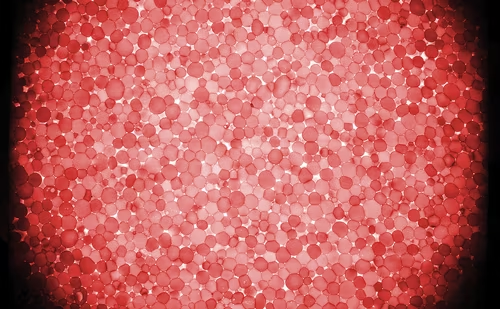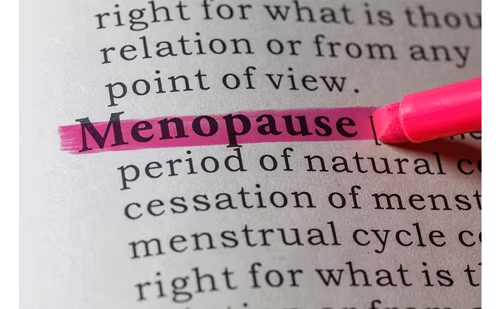Differential Diagnosis
Differential Diagnosis
Signs and symptoms of male hypogonadism can be obvious in a pre-pubertal man (e.g. infantile genitalia) and subtle in a post-pubertal man, who may complain of fatigue, sexual dysfunction, or decreased energy. By typical classification, hypogonadism can be primary (testicular failure) or secondary (hypothalamic or pituitary disorders).1 Primary hypogonadism (hypergonadotropic hypogonadism) results in low serum testosterone and elevated gonadotropins, luteinizing hormone (LH), and follicle stimulating hormone (FSH). Genetic disorders such as Klinefelter’s syndrome or any testicular trauma (surgery, radiation, chemotherapy) are examples of hypergonadotropic hypogonadism. In secondary hypogonadism (hypogonadotropic hypogonadism), LH and FSH are low or inappropriately normal in the presence of low testosterone levels. Involvement of the hypothalamus or the pituitary gland (tumor, infiltrative diseases, trauma, radiation) results in hypogonadotropic hypogonadism.
Another approach might be to think in terms of congenital causes (e.g. Klinefelter’s or Kallman’s syndromes, pseudohermaphroditism, sickle cell disease) versus acquired causes (e.g. pituitary tumors, injury or disease of the testes, stress, obesity, aging, and systemic diseases such as infections). Other causes of male hypogonadism include hyperprolactinemia, hypercortisolism, and hemochromatosis, an extremely common genetic disorder that is under-diagnosed. Screening for all of these should be part of an initial evaluation of hypogonadal young men. In addition to pathological hypogonadism, another clinical entity gaining recognition is what is called ‘andropause’, i.e. age-related decline in testosterone levels. Approximately 20% of men over the age of 65 have low serum testosterone levels. This type of hypogonadism is multifactorial and is due to a combination of primary testicular failure and pituitary insufficiency. Testosterone’s effects are clearly more pronounced during puberty, but its influences are present throughout all phases of a man’s life (see Figure 1).
Laboratory Evaluation
When hypogonadism is clinically suspected, it is essential to accurately measure serum testosterone levels.Tests should be conducted in the morning, when levels of circulating testosterone are normally highest.2 At least two abnormal test results are necessary before committing an individual to potentially lifelong testosterone therapy. A level of <200ng/dl would be considered hypogonadal, while levels between 200 and 400 would require more specific laboratory evaluation. Accuracy of laboratory test results depends to a large extent on the choice of testing methodology.
Two per cent of circulating testosterone is free, and the remaining 98% is either tightly bound to sex-hormone binding globulin (SHBG) (approximately 40%) or more weakly bound to albumin (approximately 58%). Both albumin-bound and free testosterone are thought to be biologically active.3Total testosterone concentrations do testicular disease, gonadotropin levels are extremely useful in identifying mild to moderate degrees of primary hypogonadism caused by conditions such as Klinefelter’s syndrome, chemotherapy-induced destruction, orchitis, and irradiation.
In patients with secondary hypogonadism, other laboratory tests, including measurement of prolactin levels or iron saturation, should be performed to identify specific causes of secondary hypogonadism, such as hemochromatosis, hyperprolactinemia, hypopituitarism, and others.4 Chronic diseases, such as cancer, hepatic, or renal disease, are commonly associated with declines in serum testosterone levels and inappropriately normal serum gonadotropins. Radiographic imaging of the sella with magnetic resonance imaging (MRI) should be conducted in younger men with hypogonadotropic hypogonadism and in older patients with extremely low testosterone (<150mg/dl) and low LH and FSH concentrations to rule out structural pituitary/hypothalamic lesions.
Potential Benefits of Testosterone Replacement Therapy
Pre-pubertal males will virilize with testosterone treatment. Post-pubertal males commonly have improvements in several end-organs. This includes improvement in sexual function (both libido and erectile function) and psychosocial measures, andincreased bone density and lean muscle. The longterm benefits of the latter on frailty is unknown. Testosterone Replacement Therapy
The primary therapeutic goal of testosterone replacement therapy is to obtain physiological levels of testosterone. Target levels in the middle ofphysiological ranges for a particular age are appropriate (for example, mid- to high-normal levels in younger men and low- to mid-normal levels in older men).This strategy helps avoid excess dosages as suggested by suppressed serum gonadotropin concentrations. It isimportant to minimize the patient’s exposure to supraphysiological levels of testosterone in order to avoid adverse effects such as erythrocytosis. Table 2 lists the testosterone delivery formulations that are currently approved in the US.
Current Testosterone Delivery Systems
Intramuscular Injection
As shown in the classic investigations over 20 years ago, injection of long-acting testosterone esters causes a rapid and often supraphysiological rise in serum concentrations that persists for one to three days following the injection.8 Serum levels then fall during the dosing interval, often to the lower limit of the physiological range.The clinical compromise necessary to avoid sustained periods of supraphysiological testosterone has traditionally been to administer injections of 200mg testosterone every two weeks.8 This strategy still results in significant variations in testosterone levels, often referred to as the ‘rollercoaster’ effect.
Transdermal Patches
Transdermal administration of testosterone offers serum levels that more closely mimic the circadian ranges of healthy young men. Currently, one patch system, a nonscrotal transdermal system, is commercially available for replacement therapy in hypogonadal men. In clinical trials, the majority of patients were treated with 5mg of the patch system applied daily. The testosterone transdermal system produced average morning serum testosterone concentrations within normal range in 92% of patients who participated in these studies.9







